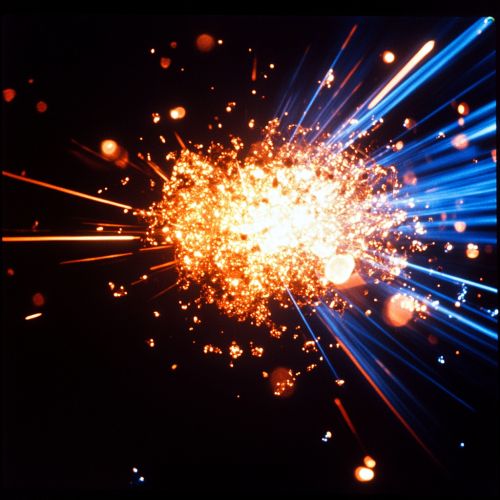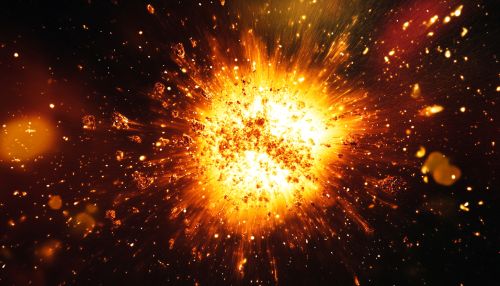Hadrons
Introduction
Hadrons are composite particles made up of quarks held together by the strong force, which is mediated by gluons. These particles are a fundamental aspect of quantum chromodynamics (QCD), the theory describing the strong interaction, one of the four fundamental forces of nature. Hadrons are categorized into two families: baryons, which consist of three quarks, and mesons, which consist of a quark and an antiquark.
Classification of Hadrons
Hadrons are classified based on their quark content and the symmetries they obey. The primary categories are:
Baryons
Baryons are hadrons composed of three quarks. The most well-known baryons are the proton and the neutron, which form the nuclei of atoms. Baryons are further classified into:
- **Nucleons**: Protons and neutrons.
- **Hyperons**: Baryons containing one or more strange quarks, such as the Lambda (Λ), Sigma (Σ), Xi (Ξ), and Omega (Ω) particles.
Mesons
Mesons are hadrons composed of a quark and an antiquark. They are generally less stable than baryons and include particles such as:
- **Pions**: The lightest mesons, consisting of up and down quarks.
- **Kaons**: Mesons containing a strange quark.
- **Charmonium and Bottomonium**: Mesons containing charm and bottom quarks, respectively.
Quark Model
The quark model, proposed independently by Murray Gell-Mann and George Zweig in 1964, is a classification scheme for hadrons. Quarks come in six "flavors": up, down, charm, strange, top, and bottom. The properties of hadrons, such as their mass, charge, and spin, are determined by the types and combinations of quarks they contain.
Quark Confinement
Quark confinement is the phenomenon where quarks are never found in isolation but always in combination with other quarks to form hadrons. This is due to the nature of the strong force, which becomes stronger as quarks move apart, preventing their separation.
Quantum Chromodynamics (QCD)
QCD is the theory that describes the interactions between quarks and gluons. It is a part of the Standard Model of particle physics. The key features of QCD include:
- **Color Charge**: Quarks possess a property called color charge, analogous to electric charge in electromagnetism. There are three color charges: red, green, and blue.
- **Gluons**: The force carriers of the strong interaction, gluons also carry color charge and can interact with each other.
Asymptotic Freedom
Asymptotic freedom is a property of QCD where the strength of the strong interaction decreases as quarks come closer together. This phenomenon was discovered by David Gross, Frank Wilczek, and David Politzer, who were awarded the Nobel Prize in Physics in 2004 for this work.
Experimental Evidence
The existence of hadrons and their properties have been confirmed through various experiments, primarily in high-energy particle accelerators. Key experiments include:
- **Deep Inelastic Scattering**: Experiments conducted at facilities like CERN and SLAC provided evidence for the quark structure of protons and neutrons.
- **Particle Colliders**: Colliders such as the Large Hadron Collider (LHC) have produced and studied numerous hadrons, including exotic states like tetraquarks and pentaquarks.
Exotic Hadrons
In addition to the conventional baryons and mesons, there are exotic hadrons that do not fit into the simple quark model. These include:
- **Tetraquarks**: Hadrons consisting of two quarks and two antiquarks.
- **Pentaquarks**: Hadrons consisting of four quarks and one antiquark.
- **Glueballs**: Hypothetical particles composed entirely of gluons.
Applications and Implications
Understanding hadrons and their interactions is crucial for several fields:
- **Nuclear Physics**: The study of hadrons is essential for understanding the structure and behavior of atomic nuclei.
- **Cosmology**: Hadrons played a significant role in the early universe, particularly during the Big Bang nucleosynthesis.
- **Medical Physics**: Techniques such as Proton Therapy for cancer treatment rely on the properties of hadrons.
See Also
References


